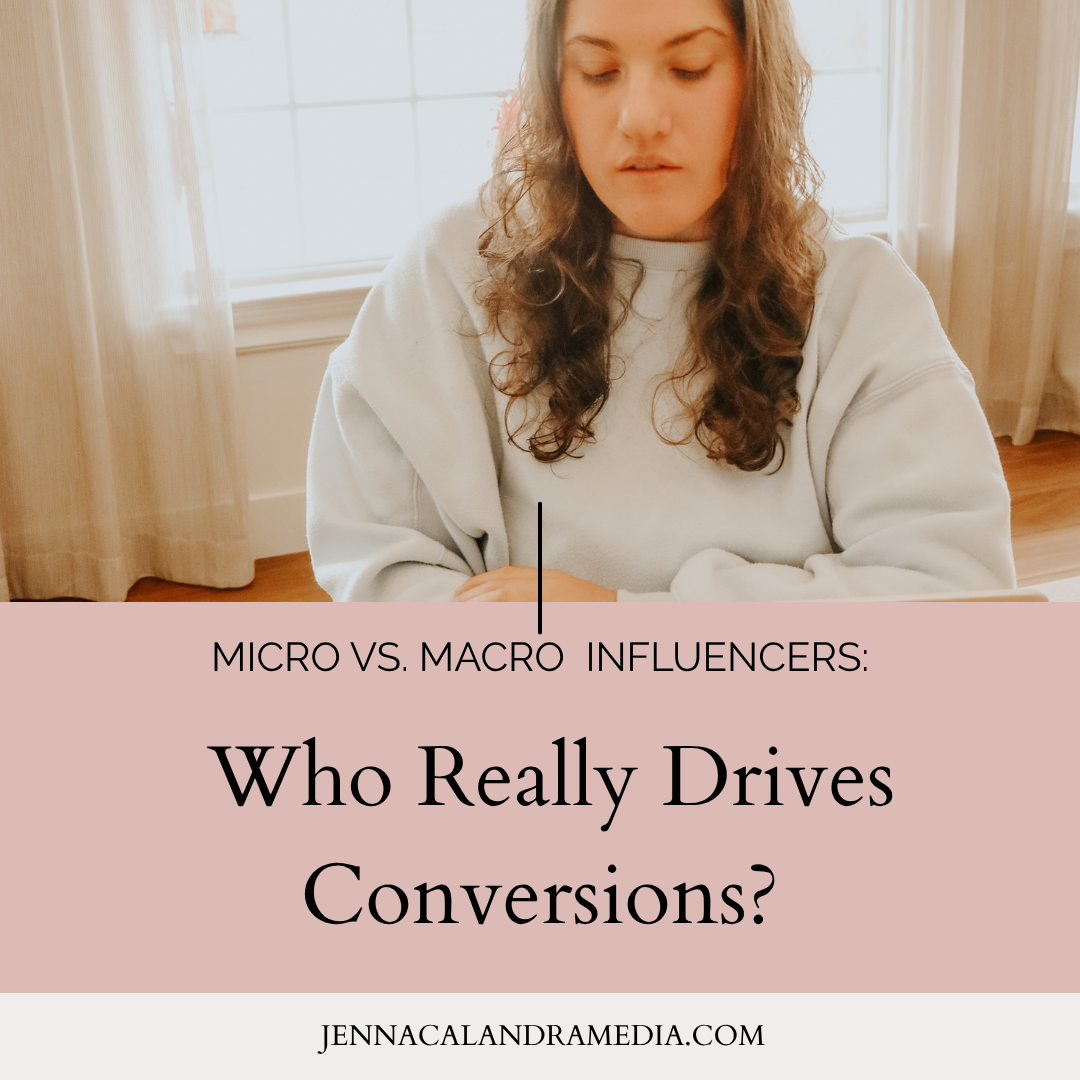Micro vs. Macro Influencers: Who Really Drives Conversions?
In the ever-evolving world of influencer marketing, brands face one big question before every campaign launch:
👉 Should we partner with a micro influencer or go big with a macro influencer?
On one side, you’ve got the micro influencers — the relatable creators with smaller but highly engaged audiences. On the other, macro influencers — the social media powerhouses who can make a single post reach millions.
Both can deliver results, but when it comes to driving conversions, the data tells an interesting story. Let’s break down the differences, the numbers, and how brands can decide which tier delivers the best ROI.
What Defines Micro vs. Macro Influencers?
Before diving into performance, let’s define what we mean by each:
Micro Influencers: Typically 10K–100K followers.
Known for niche audiences, authentic engagement, and community-driven conversations.Macro Influencers: 100K–1M+ followers.
Known for wide reach, polished content, and strong personal branding.
Each tier plays a unique role in the marketing funnel — but the real question is: who converts better?
Engagement: The Micro Advantage
If conversions are your end goal, engagement is the metric that matters most. And this is where micro influencers dominate.
According to multiple studies (including ones from HubSpot and Influencer Marketing Hub), micro influencers average 60% higher engagement rates than macro creators.
Why? Because followers see them as peers, not celebrities. Their recommendations feel like word-of-mouth advice, not an ad.
💡 Example: A micro influencer sharing their favorite skincare product in a morning routine feels personal. A macro influencer doing a sponsored post might reach more people — but fewer will actually take action.
Reach: The Macro Multiplier
Of course, when it comes to visibility, macro influencers win hands down.
A single post from a macro creator can reach hundreds of thousands (if not millions) of users in seconds. That makes them ideal for brand awareness campaigns — launches, events, or moments when you want to make noise fast.
However, that wide reach comes with a tradeoff: the larger the audience, the lower the engagement rate tends to be. It’s the classic “quality vs. quantity” dilemma.
⚡ Takeaway: Macro influencers are great for top-of-funnel visibility. Micro influencers excel at middle-to-bottom-funnel conversions.
Cost & ROI: Small Budgets, Big Returns
Budget plays a huge role in deciding your influencer tier.
Micro Influencers: Often charge less, making it possible to collaborate with multiple creators across niches. This diversification usually leads to higher total engagement for the same spend.
Macro Influencers: Charge significantly more due to their reach and status. While they can deliver huge impressions, the cost per conversion can be higher.
📊 Data snapshot:
A micro influencer campaign might yield a 3–4% conversion rate, while macro campaigns average closer to 1–2%. But because of scale, macro influencers can still drive impressive volume — if your goal is reach, not efficiency.
Trust: The Ultimate Conversion Driver
Trust is everything in influencer marketing.
Micro influencers tend to foster stronger connections because their followers see them as real people, not distant figures. They engage in DMs, reply to comments, and share personal experiences — all of which create credibility.
Macro influencers, meanwhile, hold aspirational value — they inspire rather than relate. That’s powerful for luxury or lifestyle brands where image matters. But when it comes to making a purchase decision, audiences often trust smaller creators more.
✨ Think about it: People buy from people they feel connected to — not just people they admire.
The Smart Move: A Hybrid Strategy
Here’s the truth — it’s not about choosing one over the other.
The most successful brands use a hybrid approach:
Use macro influencers to create buzz and awareness.
Use micro influencers to reinforce trust and drive conversions.
This layered strategy covers every stage of the funnel — from discovery to decision.
Final Verdict: Micro Drives Conversions, Macro Builds Momentum
If your brand’s goal is sales, loyalty, and engagement, micro influencers are your best investment.
If you’re aiming for exposure, reach, and visibility, macro influencers hold the crown.
But the ultimate power play? Combining both — letting macro influencers introduce your brand to the world and micro influencers close the sale.
Ready to Build an Influencer Strategy That Converts?
At Jenna Calandra Media, we help brands identify the right creators for the right goals — blending data-driven strategy with authentic storytelling. Whether you’re launching your first influencer campaign or scaling globally, we’ll help you turn impressions into conversions.


